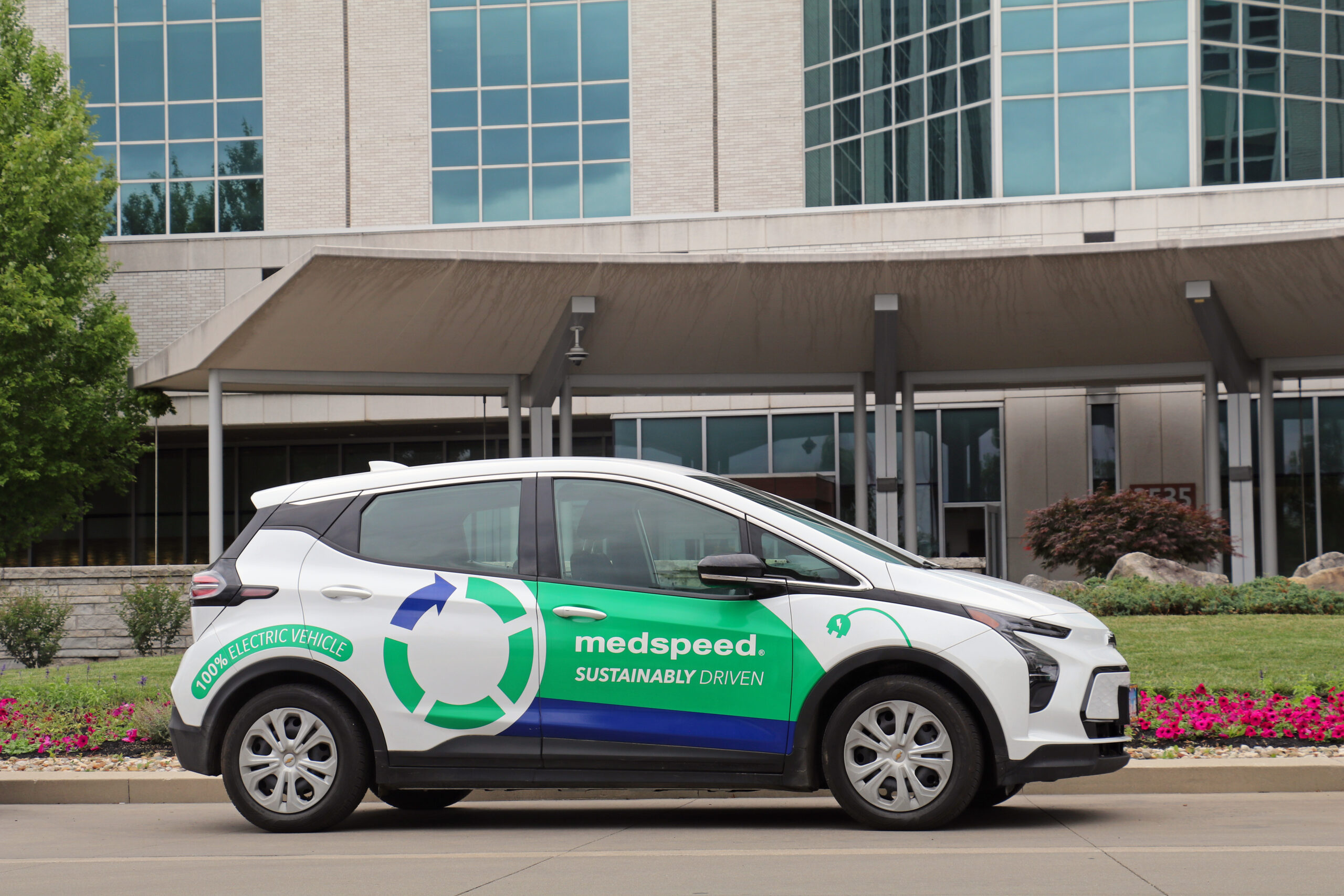
How MedSpeed’s EVs will Help to Lower OhioHealth’s Carbon Footprint
Healthcare in the U.S. is responsible for as much as 8.5% of worldwide greenhouse gas emissions, according to The Commonwealth Fund. And, while Scope 1 and Scope 2 of those emissions are important to address, a staggering 80% of overall healthcare emissions are classified as Scope 3 emissions—from the production and transportation of goods. Given those numbers, the emissions that are produced beyond the four walls of hospitals and healthcare offices must be addressed.
Sustainability has always been an important value at MedSpeed. From day one, we have focused on creating efficient networks that drive the fewest possible miles to support our customers. MedSpeed-operated networks are typically 25% greener than those that were in place before.
This year, we are taking a large step forward in that commitment and recently had a discussion with our decade-long partner OhioHealth about how they could combat their organization’s Scope 3 impact. Since partnering with MedSpeed, OhioHealth’s network has grown to 4 million annual miles driven, with close to 750,000 stops per year.
As part of that business partnership and to address our mutual sustainability goals, MedSpeed has deployed electric vehicles (EVs) to service routes for OhioHealth. These EVs not only support MedSpeed’s “25 by 25” initiative which is our commitment to converting 25 percent of our current eligible fleet to electric vehicles by the end of 2025, but they also support OhioHealth’s pledge to reduce their greenhouse gas emissions by 50 percent by 2030, and to achieve zero emissions by 2050.
EVs are an excellent opportunity to lower healthcare’s Scope 3 emissions. For each EV (ours are Chevy Bolts) that MedSpeed puts on the road, several tons of greenhouse gas emissions are eliminated per year. To put that into context, for every electric vehicle in operation, that’s the equivalent of an annual CO2 reduction of hundreds of mature trees.
As we continue to build out our “25 by 25” initiative by expanding the number of EVs in our fleet, we will also maintain our other sustainability efforts of reducing miles driven, digitizing paper processes and finding opportunities to help our customers minimize waste. Our commitment to fleet electrification and our work supporting customers such as OhioHealth for a cleaner future helps us all make a concerted effort to support the health of the communities we serve.